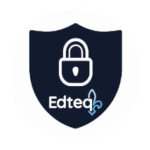Comment fabrique-t-on de l’information? Dans le cadre d’une collaboration entre l’Agence Science-Presse et l’École branchée, nous nous intéressons aujourd’hui au biais de confirmation. Zoom sur pourquoi nous sommes portés à croire les fausses nouvelles. Indice : la faute revient en grande partie à notre cerveau!
👀 Le contexte
Le biais de confirmation désigne la tendance à interpréter les informations de manière à confirmer nos croyances et nos opinions existantes. Il fait partie de la grande famille des biais cognitifs, ces raccourcis qu’effectue notre cerveau et qui sont susceptibles de nous induire en erreur.
Pourquoi sommes-nous portés à croire les fausses nouvelles? Ce n’est certainement pas parce que nous ne sommes pas intelligents ou allumés! En fait, la faute revient en grande partie… à notre cerveau. Nous nous devons alors de développer les bons réflexes pour contourner le biais de confirmation et être en mesure d’exercer notre jugement critique en tout temps. Malheureusement, le biais de confirmation est un levier puissant de désinformation, de polarisation et même de radicalisation.
La crise de la COVID-19 a notamment amplifié ces phénomènes et divisé la population :
« Quand le nombre de cas (de COVID-19) est faible ou en baisse, le militant sanitaire y verra la preuve du bien-fondé des mesures, le coronasceptique dira qu’elles sont désormais inutiles. Quand les cas sont en hausse, les uns réclament des mesures plus musclées, les autres y voient la preuve qu’elles ne fonctionnent pas. Avec pour résultat que nous avançons dans cette deuxième vague et dans une éventuelle troisième en rangs destinés à devenir de plus en plus dispersés. »
Le Journal de Montréal, 14 octobre 2020
Voici d'ailleurs une affichette à télécharger et à mettre bien en vue dans votre local!
Obtenez ici une version pour le primaire >
🎯 Intention pédagogique
Au terme de ces activités, l’élève sera en mesure de reconnaître ses propres biais cognitifs et de se servir d’outils pour les contourner.
💡 Suggestions d’activités
Disciplines et niveaux visés
-ECR (3e cycle du primaire)
Thème : des personnes membres de la société
• Expliquer comment les membres d’une société exercent une influence les uns sur les autres.
-ECR (1er cycle du secondaire)
Thème : l’autonomie
• Favoriser les conditions de l’autonomie : le jugement critique, le bon sens, la responsabilité morale, la capacité de choisir, l’authenticité, etc.
Outils numériques suggérés
- Pour réfléchir et réagir : Mentimeter
- Pour dessiner un croquis-note : Tayasui Sketches ou Paper
- Pour créer une infographie : Canva
Objectifs des activités
- Réfléchir sur les conséquences d’utiliser les médias sociaux pour s’informer.
- Élaborer un croquis-note pour définir le portrait de sa bulle informationnelle.
- Créer une infographie qui met de l’avant les bonnes pratiques pour réussir à sortir de sa bulle
informationnelle.
☝️ Activité : Prise de conscience
Visionnez cette capsule de l’humoriste Louis T. qui vulgarise très bien ce qu’est un biais de confirmation :
Demandez aux élèves de réfléchir au réflexe qu’ils ont quand ils lisent une nouvelle sur leur réseau social favori. Est-ce qu’ils croient cette nouvelle parce qu’elle leur semble véridique et fiable ou parce qu’elle les fait sentir bien?
☝️ Activités : Le biais de confirmation
Au menu de cette fiche d’activités :
- Exercice 1 : Plusieurs études démontrent que de plus en plus de Canadiens s’informent via les réseaux sociaux. Quelles sont les conséquences de cette habitude?
- Exercice 2 : Faites le portrait de votre bulle informationnelle. Ces questions pourraient vous aider à trouver quelques éléments de réponse : (…)
- Exercice 3 : Identifiez deux moyens de sortir de votre bulle informationnelle.
🔎 À PROPOS DE CETTE SÉRIE SPÉCIALE
À travers huit fiches pédagogiques, les élèves seront amenés à se placer dans la peau d’un journaliste et à réaliser des activités créées spécialement pour les éclairer sur diverses facettes de la production de l’information à l’ère des réseaux sociaux.
La conception des différentes fiches pédagogiques a été rendue possible grâce à la collaboration entre l’Agence Science-Presse et l’École branchée. Chaque fiche renferme une partie théorique sur un sujet précis touchant la production d’information, en plus d’activités qui tendent à développer diverses compétences disciplinaires et numériques chez l’élève.
Consultez les autres guides de ce dossier spécial :
Fiche #1 : Information ou opinion?
Fiche #2 : Infodémie : comment reconnaître un site d’information fiable
Fiche #3 : Fiables ou pas? Comment identifier les sources journalistiques crédibles
Fiche #5 : Les influenceurs sous la loupe ou comment reconnaître la publicité cachée
Fiche #6 : Qu’est-ce qu’un média d’information?
Fiche #7 : Évaluer la validité de l’information scientifique en ligne
Fiche #8 : « Désinformateurs » : comment font-ils pour nous tromper?
🔎 POUR EN SAVOIR PLUS
Les Biais de Confirmation – La Tronche en Biais #5
YouTube, 29 novembre 2015
Coronavirus : comment notre cerveau biaise notre perception de l’épidémie
RTBF, 29 septembre 2020
Des élus québécois visés par une campagne de messages anti-mesures sanitaires
Radio-Canada, 14 octobre 2020
Ateliers thématiques : comment combattre la désinformation
Les Décrypteurs de Radio-Canada









